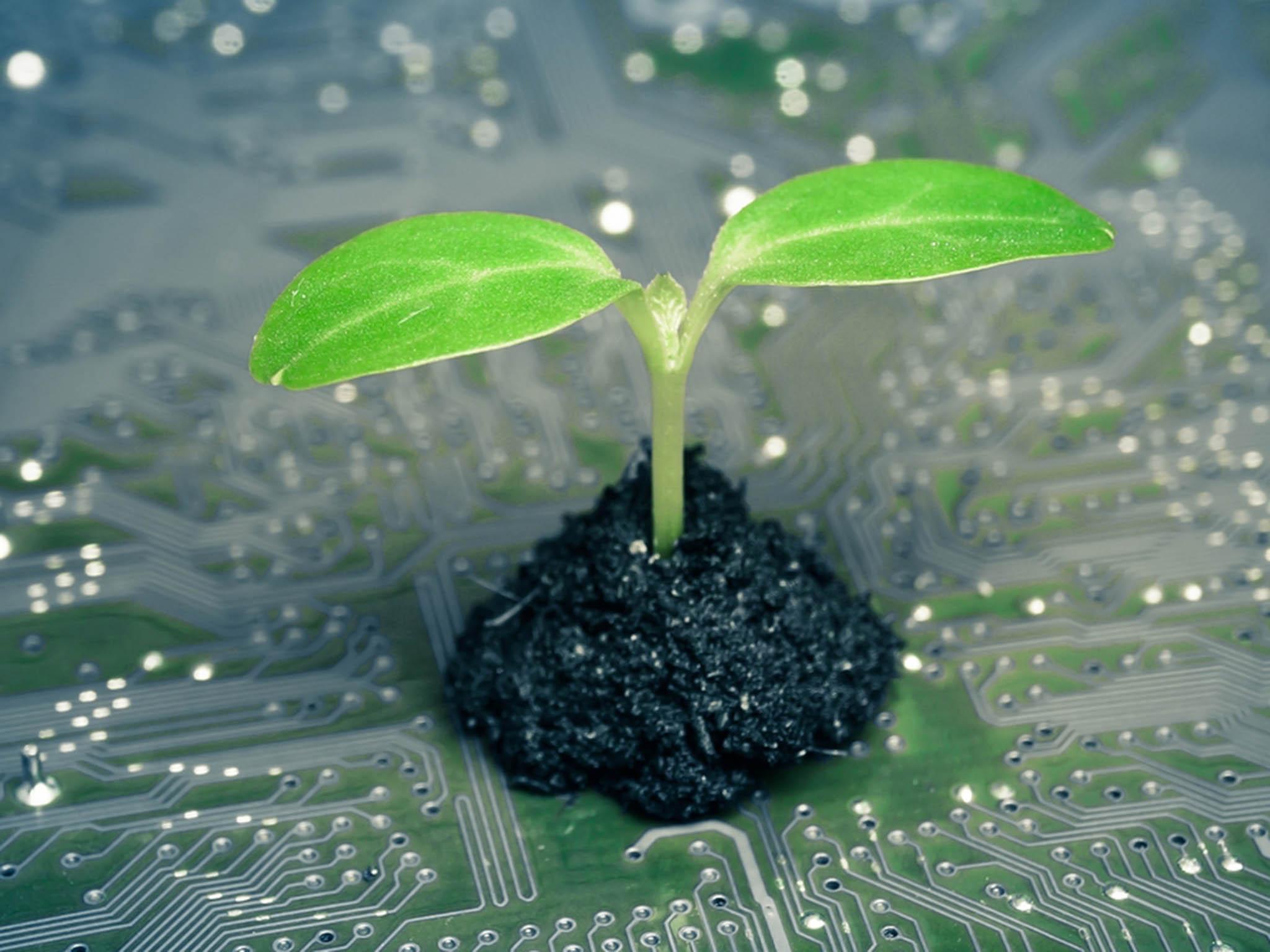Five amazing ways plants have created new technologies
From spinach that can detect explosives to vegetarian meat, biological technology has the potential to change the world

Scientists have come up with a strange new method for detecting explosives: using spinach. The plants are impregnated with fluorescent “bionic” nanotubes that emit infrared light. In the presence of specific chemicals, the light turns off and this can be used as a signal that explosives are present. The change in fluorescence can even be detected using a modified mobile phone.
But why use modified spinach instead of the nanotubes on their own? It’s all down to the fact that plants draw up large amounts of water through their roots and up to their leaves without using much energy.
So in this case, the spinach is being used as an automatic water-sampling system for the explosive detecting nanotubes.
This impressive ability is one of many reasons why plants are often used not just as food and clothing but as part of complex technologies. Here are some more amazing ways we can use vegetation.
Decontamination
Plants’ ability to process water can also be used for something called “phytoremediation”. Soil contaminants dissolved in the water taken up by plants are carried to the leaves and accumulate in there as the water evaporates. The plants are can then be harvested and removed, taking the contaminants with them. This is being used to detoxify soils of arsenic and lead. Valuable contaminants, such as cadmium or nickel, can even be recovered in a process called “phytomining”.
In a recent twist, certain plants have been genetically modified to combine their capacity for processing large volumes of water with the characteristics of types of bacteria that can break down the explosives TNT and RDX. This means we can produce modified plants that can both detect and defuse explosives.
Explosives
But plants are not just used for peaceful purposes. In 1846, Christian Schönbein was carrying out an experiment in his kitchen (against his wife’s express wishes). He spilled a mixture of concentrated acids and grabbed the nearest thing to hand to mop them up and only later realised that he had used his wife’s apron. It looked fine after he had hurriedly washed it, and he hung it over the stove to dry. The crisis was averted, at least until the apron exploded.
Schönbein had unwittingly converted the cotton of the apron into nitrocellulose, or guncotton, a more powerful explosive than TNT. The cellulose that forms the basis of guncotton is the main structural constituent of plants and by mass is the most common biological molecule on Earth. Cellulose is easy to obtain and nitrocellulose is more powerful than gunpowder and so guncotton replaced gunpowder for many purposes in the 19th century.
In the novel From the Earth to the Moon, Jules Verne propelled his explorers into space using a huge gun fired using nitrocellulose. In reality, Verne’s space travellers would have been turned to puree by the acceleration. But he wasn’t completely wide of the mark, as nitrocellulose is still used in solid fuel rocket propellants today – especially for military applications, because it doesn’t create smoke that would give away the launcher’s position as it combusts.
Plastic bandages
Nitrocellulose and other nitrated plant polysaccharides were also among the first “plastics”. Their uses included the film used in early cinema, which was based on nitrocellulose and could ignite or even explode if the projector got too hot. These unstable substances have largely been replaced with safer plastics, but a liquid containing dissolved nitrocellulose is still used in medicine. It is painted over cuts and seals them with a fine film of nitrocellulose.
Plants produce numerous biopolymers and, as we search for more environmentally friendly and sustainable replacements for oil-based plastics, it is time for these naturally based alternatives to make a return.
Vegetarian meat
Obviously plants form the basis of most of our food, but scientists have recently created a burger that looks, smells, tastes and even cooks like meat even though it is entirely made from plant materials Doing this has meant solving a number of distinct challenges. For example, to behave like beef during cooking, the new burger has to contain vegetable fats that are solid at room temperature but melt when heated. The fat used in this case came from coconuts.
Plants don’t have the proteins haemoglobin and myoglobin that give red meat its colour and iron content. But some contain a very similar substance called leghemoglobin which, like haemoglobin and myoglobin, absorbs oxygen. This comes from plant species such as peas and beans which have root nodules containing bacteria that turn nitrogen from the air into fertiliser for the plant.
Oxygen attacks this nitrogen-converting system so aggressively that some of its components can lose 99% of their capacitiy in less than six minutes. And so leghemoglobin is used to protect it by soaking up oxygen in the nodules. The nitrogen-fixing nodules are literally blood red inside because leghemolglobin is the same colour as haemoglobin.
Despite this, the leghemoglobin used to give the plant burger its appearance and iron content is actually not obtained from plants because this is too inefficient. Instead it is produced by modified yeast grown in vats of blood-coloured liquid in scenes reminiscent of the TV series True Blood.
This article first appeared on The Conversation (theconversation.com). Stuart Thompson is a senior lecturer in plant biochemistry, at the University of Westminster
Join our commenting forum
Join thought-provoking conversations, follow other Independent readers and see their replies
Comments
Bookmark popover
Removed from bookmarks